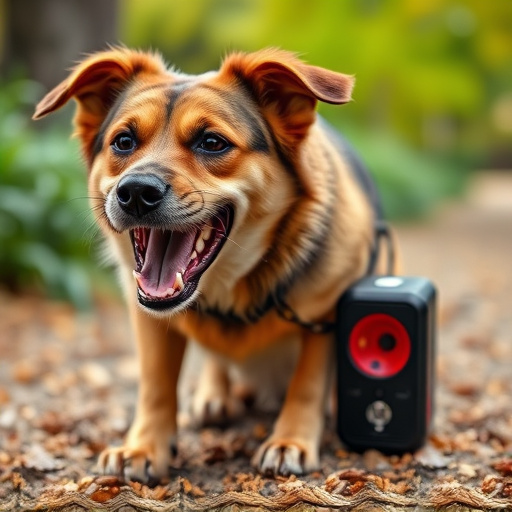Electronic pet deterrents, like ultrasonic repelents, offer safe and humane solutions for dog training and behavioral issues. Emitting high-frequency sounds unpleasant to dogs, they promote positive reinforcement without harm. Adhering to Electronic Pet Deterrent Safety Regulations is crucial, including proper use, limited exposure time, and regular monitoring. Testing in controlled settings, combining with rewards, and understanding canine sensitivity enhance effectiveness while preventing stress or anxiety.
“Unleash a new level of pet training with dog training ultrasonic repellent gear – a modern approach to behavior modification. This comprehensive guide explores the world of electronic pet deterrents, shedding light on their functionality and advantages. From understanding how these devices work to addressing key safety considerations and regulatory aspects, we provide valuable insights.
Learn about best practices for using ultrasonic repellents and discover practical tips for training your dog effectively. Overcome common challenges and ensure a harmonious bond with man’s best friend while harnessing the power of Electronic Pet Deterrent Safety Regulations.”
- Understanding Electronic Pet Deterrents: How They Work and Their Benefits
- Safety Considerations: Regulations and Best Practices for Ultrasonic Repellents
- Training Your Dog with Ultrasonic Gear: Tips for Success and Common Challenges
Understanding Electronic Pet Deterrents: How They Work and Their Benefits
Electronic pet deterrents, such as ultrasonic repelents designed for dogs, are innovative tools in the realm of pet training. These devices operate by emitting high-frequency sound waves that are unpleasant to animals, like dogs, without causing any harm. The technology is safe and humane, addressing behavioral issues like barking, jumping, or biting with minimal intervention.
The benefits of using an electronic pet deterrent extend beyond quick results. They offer a consistent and reliable method of training, allowing for positive reinforcement of desired behaviors. Moreover, these devices can be highly effective in specific situations where traditional training methods might struggle, such as with particularly stubborn or anxious dogs. In terms of Electronic Pet Deterrent Safety Regulations, it’s crucial to follow guidelines to ensure responsible use, including proper adjustment and limited application to address specific issues, thereby fostering a safe environment for both pets and their owners.
Safety Considerations: Regulations and Best Practices for Ultrasonic Repellents
When considering ultrasonic repellent gear for training your dog, it’s crucial to prioritize safety. These electronic pet deterrents emit high-frequency sound waves designed to discourage unwanted behavior, but their safe and effective use requires careful navigation. Ensure you familiarize yourself with local regulations regarding the use of such devices, as some areas have specific restrictions or bans on ultrasonic pet trainers due to potential health concerns for both animals and humans.
Best practices suggest using these tools responsibly, adhering to manufacturer guidelines, and limiting exposure time to ensure minimal risk. Avoid excessive or prolonged use, especially in confined spaces, as the high-frequency sound waves could cause discomfort or distress to your dog. Regular monitoring is essential, and it’s recommended to consult with a veterinarian or certified dog trainer for personalized advice tailored to your dog’s unique needs and temperament.
Training Your Dog with Ultrasonic Gear: Tips for Success and Common Challenges
Training your dog with ultrasonic gear can be an effective method to discourage unwanted behaviors, but it requires patience and understanding. This type of electronic pet deterrent emits high-frequency sound waves that are inaudible to humans but irritant to dogs, reinforcing positive behavior training. To ensure safety regulations are met, always choose products designed for pets and follow manufacturer guidelines strictly. Testing the device in a controlled environment first can help manage expectations and prevent accidental activation.
Common challenges include dog sensitivity variations, where some may be more or less responsive to the ultrasonic signal. Misuse of the device, such as using it for overly aggressive dogs or without combining with positive reinforcement training, could cause stress or anxiety. Regular practice sessions, using the device consistently in conjunction with rewards and praise, are key to success. Additionally, remember that every dog is unique; what works for one might not work for another, so adjustments in training methods may be necessary.
When using ultrasonic repellent gear, it’s crucial to follow safety regulations and best practices to ensure both your dog’s well-being and effective training. By understanding how electronic pet deterrents work and implementing proper training techniques, you can successfully address unwanted behaviors while prioritizing your dog’s comfort and safety. Remember that consistent use and positive reinforcement are key to achieving lasting results.
